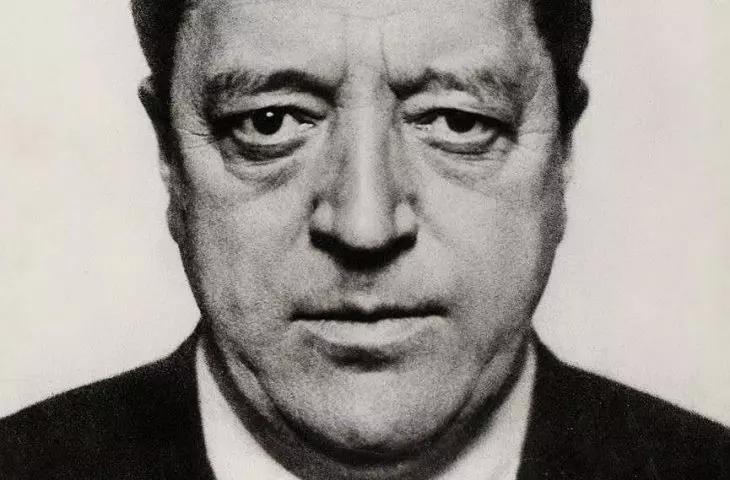If Mies van der Rohe were creating today, would everyone know his name? What repercussions does his famous call for minimalism — "less is more" — have today?
The German Pavilion in Barcelona designed by Mies van der Rohe and Lilly Reich
Photo: Alexander.Hüls | Wikimedia Commons © CC BY-SA 2.0
Who was Mies van der Rohe?
Ludwig (or actually Maria Ludwig Michael Mies), the youngest in the Mies family, was born on March 27, 1886 in Aachen, Germany, where his father (Michael Mies) — a stonemason and master builder — ran a studio where he trained his son. He took the second part of his surname — Rohe — as an architect from his mother (Amalie, née Rohe), thus creating the nickname by which we know him today — Mies van der Rohe.
Although he never received a university education, at the age of 18 he already took his first design steps under the watchful eye of Bruno Paul (a furniture designer), and completed his debut project when he was only 21. It was a rather traditional in form house for a German philosopher, Alois Riehl, in Potsdam. However, it turned out to be so interesting that it attracted the attention of Berlin architect Peter Behrens, who offered Mies to work with him (it was in his studio that he met Le Corbusier and Walter Gropius!).
In 1913, the young architect married Ada Bruhn, about whom, unfortunately, we don't know much. The couple had three daughters, but rather quickly decided to separate (there are rumors that he also lived to have an illegitimate son while serving in Germany in 1917). Mies van der Rohe was also romantically linked with designer Lilly Reich, with whom he collaborated for more than a decade, sculptor and art collector Mary Callery, musician and dancer Nelly van Doesburg, and doctor Edith Farnsworth, for whom he designed the famous Farnsworth House. In the 1940s, he became involved with American sculptor Lora Marx, with whom he probably remained until his death. Was the architect an "arrogant womanizer"? Perhaps, but enough gossip, let's get to the specifics!
Farnsworth House in Plano designed by Mies van der Rohe
Photo: Carol M. Highsmith | U.S. Library of Congress, Highsmith Archive, reproduction number: LC-DIG-highsm-04118, Public Domain
What is Mies van der Rohe known for?
You think "modernism", you say "Mies van der Rohe". His name is always mentioned among the most important representatives of the international style. He is sometimes referred to as the king of modernism (Le Corbusier was said to be the pope of this style), the father of minimalism (according to him, in the details, or details, lies not the devil, but God — Gott ist im Detail), one of the forerunners of modern architecture. He also aspired to be "the architect of Germany", which he proved by participating in competitions to design the Reich Bank (1933) or the pavilion for the Brussels World Exposition (1935). He was director of the Bauhaus for two years (1930-1932), at which time the school was moved to Berlin and functioned more as a private architect's college. Although he moved to the United States in 1937 and obtained American citizenship, it is his name that the most important of the European architectural prizes, the European Union Prize for Contemporary Architecture — Mies van der Rohe Award, which has been awarded since 1987, is named after him.
Neue Nationalgalerie, the New National Gallery in Berlin designed by Mies van der Rohe
Photo: Harald Kliems | Wikimedia Commons © CC BY-SA 2.0 de
Its architecture was intended to fit in with the vision of "skin and bones", based on simplicity, geometric volumes, open spaces, legibility of construction — a functional combination of steel and glass devoid of superfluous elements. It was a noteworthy installment of minimalism, experimenting with then-innovative materials and technologies, but can architecture really be reduced to said steel bones clad in glass skin?
Mies van der Rohe died at the age of 83, on August 17, 1969 in Chicago. The cause of his death was said to be esophageal cancer caused by compulsive cigarette smoking.
Mies van der Rohe's most important projects
From Mies van der Rohe's extremely rich architectural output, we have selected five particularly important projects:
Barcelona Pavilion (1929)
Created jointly with Lilly Reich, the Pavilion of Germany at the World Exhibition in Barcelona. An iconic, horizontal structure that blurs the line between inside and outside. The pavilion makes use of some of the most important features of Modernist architecture: a free plan, i.e. no division into enclosed rooms and a flat roof, a functional yet economical solution that cuts away from the archetypal shape of a house with a gabled roof. For the pavilion, the duo also created the Barcelona chair, which is now a classic of furniture design.
The German Pavilion in Barcelona, designed by Mies van der Rohe and Lilly Reich
Photo: Christian Gänshirt | Wikimedia Commons © CC BY-SA 4.0
Villa Tugendhat (1930)
This is also the fruit of a collaboration with Lilly Reich. The luxurious single-family home in Brno, Czech Republic, proved so important that it was listed as a UNESCO World Heritage Site. The innovative building with walls realized in a steel frame structure is integrated into the sculpted topography of the area. The minimalist interior is adorned with an impressive partition wall of colorful onyx. Unusually for the time, the villa was equipped with air conditioning and a humidification system, electrically operated windows and even a moth-proof storage room for furs. Fancies or functionalism?
Villa Tugendhat in Brno, designed by Mies van der Rohe and Lilly Reich.
Photo: Petr1987 | Wikimedia Commons © CC BY-SA 4.0
Farnsworth House (1951)
In Plano, Illinois, Ludwig Mies van der Rohe designed a weekend suburban home for Mrs. Farnsworth. Raised nearly a meter and a half above ground level (another important feature of modernism: pilotis, or pillars that raise the building), the 140-square-meter glazed, minimalist block rests on steel frames. The idea for the house was born in pleasant circumstances — during a party. The realization ended less pleasantly — a dispute over excessive construction costs and a lawsuit alleging malpractice (dismissed as unfounded). It was the last private house completed by Mies.
Farnsworth House in Plano, designed by Mies van der Rohe
Photo: Victor Grigas | Wikimedia Commons © CC BY-SA 3.0
Seagram Building (1958)
The New York skyscraper was created in collaboration with Philip Johnson, the first ever Pritzker Prize winner. Standing in Manhattan, the cuboidal building is 157 meters high (38 stories). Apparently, Mies van der Rohe had no imposed budget (!), and the building was supposed to be the crowning achievement of his work. So it was luxurious — it was the first office building in the world with an embossed bronze facade (1,500 tons) and the first skyscraper in New York with full-length glass windows. "The New York Times" described it as one of the most copied buildings in the city. The pluses? The construction of the building ushered in a new era of urban planning and the creation of public spaces next to privately owned buildings. You can read more about Privately Owned Public Spaces in the article: POPS — how private spaces can become public assets.
Seagram Building in New York, a skyscraper designed by Mies van der Rohe
Photo: Noroton | Public domain; Photo: Gabriel Fernandes | Wikimedia Commons © CC BY-SA 2.0
Neue Nationalgalerie (1968)
We're back in Berlin! The New National Gallery was completed a year before Mies van der Rohe's death and is the architect's only post-war building on German soil. It is considered the quintessence of the ideas of universal space developed by Mies van der Rohe — composed on a square plan, the glazed block is covered with a flat roof supported by eight pillars. The monumental yet simple structure underwent a major renovation under the guidance of David Chipperfield in 2015.
Neue Nationalgalerie, the New National Gallery in Berlin designed by Mies van der Rohe
Photo: Raimond Spekking | Wikimedia Commons © CC BY-SA 4.0
BONUS:
- "Mies" from German can be translated as "mean", "lousy", "ugly."
- He was head of the School of Architecture at the Armour School of Technology in Chicago (later Illinois Institute of Technology).
- The architect received the Medal of Freedom from JFK (US President John F. Kennedy).
- Mies van der Rohe's grandson, Dirk Lohan, is also an architect, running the Chicago office of Lohan Architecture.
- He is credited with the sentences: "It is better to be good than to be original" and "Architecture is not a playground for children or the elderly. Architecture is the true field of the struggle of the spirit".
- Ludwig Mies van der Rohe was the zodiacal Aries.














































